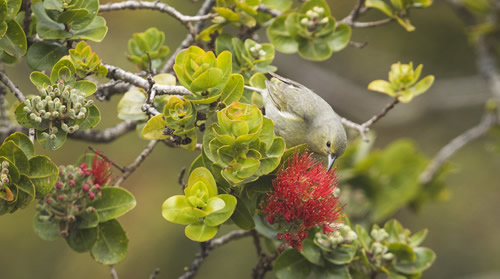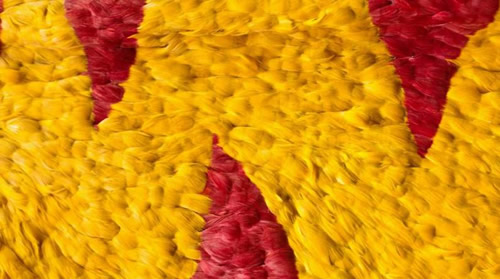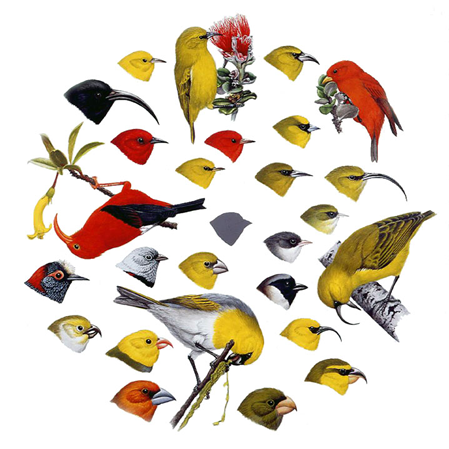Birds
A blend of unique biodiversity and alien introductions
Hawaiian Forest Birds
Native Hawaiian forest birds found on Maui include members of the Hawaiian honeycreepers who are strikingly diverse and are some of the most endangered birds in the world. Evolving from one ancestral finch millions of years ago, there were over 54 native Hawaiian honeycreepers found on the islands.

Cultural Significance
Birds are entwined in both Hawaiian culture and tradition across the islands.

The history of birds in Hawai’i is one of tremendous radiation due to geographic isolation resulting in numerous species of birds found nowhere else on earth. Unfortunately, Hawaiian flora and fauna have suffered massive extinctions since humans and introduced mammals arrived.
Sadly, more forest birds have joined the extinction list fairly recently. These include the O’u (Psittirostra psittacea), Bishops O’o (Moho bishopi), Maui-nui ‘Akialoa (Akialoa lanaiensis), and the Maui form of the Oloma’o (Myadestes sp.). The Maui ‘Akepa (Loxops ochraceus), the Maui Nukupu’u (Hemignathus affinis), and the Po’ouli (Melamprosops phaeosoma) have not been seen in recent years and are possibly extinct.
We focus our efforts on the conservation of the most critically endangered of the surviving Maui honeycreepers, the Kiwikiu or Maui Parrotbill (Pseudonestor xanthophrys) and ‘Ākohekohe or Crested Honeycreeper (Palmeria dolei) and the introduction of ʻAlalā or Hawaiian Crow (Corvus hawaiiensis). These species and other forest birds such as the Maui ‘Alauahio or Creeper (Paroreomyza montana) and ‘I’iwi (Drepanis coccinea) are declining on Maui for many reasons including habitat loss and degradation, introduced predators and ungulates, and introduced diseases. Today, exotic diseases, such as avian malaria and avian pox, restrict forest birds to high elevations where low temperature prevents the survival of vectors and disease organisms. We combine habitat management with ornithological research to understand reasons for declines and the ways in which we can help endangered forest bird species recover.
Save the Forest, Save the Birds
It takes a community of dedicated individuals and support to make conservation happen
